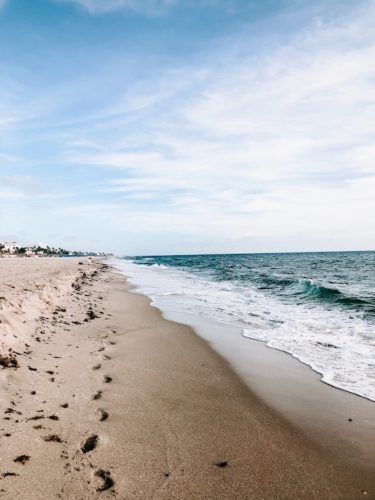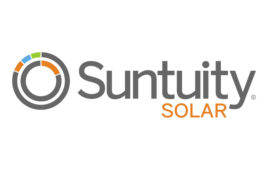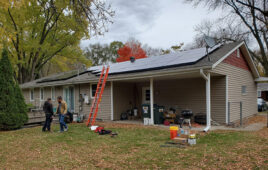
Florida will soon have the largest community solar program in the country after a unanimous PSC ruling.
The COVID-19 pandemic has caused most state legislative bodies to shut down or focus specifically on public health efforts, and may cause some of the pending renewable energy legislation to stall. Here’s what was in motion before the shutdowns.
Florida PSC unanimously approves largest community solar program in the country
Tallahassee, Florida
The Florida Public Service Commission unanimously approved Florida Power & Light’s nearly 1.5-GW community solar program, which will be the largest in the nation. Thanks to advocacy efforts by Vote Solar and SACE, there will be a carve-out for low-income customers to have access to participate in the program.
Berkeley Lab report finds lower income ranges adopting solar over time
Berkeley, California
A new report by the Berkeley Lab found solar adopters span all income ranges, including low-to-moderate (LMI) households. The study found 15% of 2018 solar adopters had household incomes under $50,000. Adoption has been gradually migrating toward lower income ranges over time.
Illinois activists rally for 100% renewables by 2050
Springfield, Illinois
The Illinois Clean Jobs Coalition, made up of over 700 community leaders, renewable energy advocates, business representatives and more, rallied at the state capitol in support of the Clean Energy Jobs Act (CEJA) in early March. CEJA sets a target for 100% renewable energy by 2050 and growing the green workforce to reach the goal.
Iowa environmental groups release utility-scale solar siting guide
Des Moines, Iowa
The Iowa Environmental Council and Center for Rural Affairs published a best practices guide to help counties develop utility-scale solar siting ordinances as solar grows in the state. The guide also includes guidance on how to make solar sites pollinator-friendly.
Virginia’s 100% RPS bill heads to governor’s desk
Richmond, Virginia
The Virginia Senate passed the Virginia Clean Economy Act (VCEA) that sets a target of 100% clean energy by 2045. The bill also aims to “unlock” rooftop solar by rolling back unnecessary regulations and increase the PPA cap from 50 to 1,000 MW.
New Virginia law prevents HOAs from blocking solar installations
Richmond, Virginia
Governor Ralph Northam signed a bill that adds clarity to Virginia’s existing law prohibiting HOAs from placing “unreasonable restrictions” on solar installations. The new law defines what “unreasonable” means, including if it reduces system performance by 10% or more or adds more than 5% to the cost of the installation.
140 solar companies ask Trump administration to moderate panel tariffs
Washington, D.C.
SEIA delivered a letter to the Trump Administration on March 11, signed by more than 140 solar companies and advocates nationwide. The letter asks the administration to moderate solar panel tariffs by including country exclusions, duty-free treatment for solar cells and more.
Washington State to create task force to study solar panel recycling guidelines
Olympia, Washington
Washington state’s House and Senate passed a bill that would establish a task force to update the state’s solar recycling policy. The bill passed through the legislature with strong bipartisan support and no stakeholder opposition. Sean Gallagher, VP of state affairs for SEIA, said the governor plans to veto part of the bill to cut back on non-COVID-related state expenditures.
West Virginia bill would allow utilities to develop solar
Charleston, West Virginia
West Virginia legislators passed a bill that would allow electricity producers to each install up to 200 MW of solar capacity through the program’s expiration date of December 31, 2025, according to WVNews.com.
New Minnesota code limits size of residential rooftop solar projects
Saint Paul, Minnesota
Minnesota adopted new residential building codes that prohibit installers from mounting panels within 3 ft of a roof’s edge and requires them to create 3-ft pathways between arrays for emergency workers, according to the Energy News Network. ENN reports this new rule may reduce the size of residential installations by 20% or more.
Broad coalition applauds New York renewable siting and transmission reform
Albany, New York
A coalition made up of environmental, clean energy industry, real estate and labor groups voiced support for New York’s inclusion of renewable energy siting and transmission reforms in the state budget. The coalition says the improvements will help with economic recovery and job creation after the pandemic subsides since there are more than 60 wind and solar projects that can begin construction after environmental review and permitting.
CESA organizes collaborative to help states attain 100% clean energy goals
Montpelier, Vermont
The Clean Energy States Alliance (CESA) formed the 100% Clean Energy Collaborative to help states with 100% clean energy goals share wisdom to accomplish them. The main participants in the collaborative will be state officials working on such goals, as well as policymakers in other states considering 100% clean energy targets.





“Florida PSC unanimously approves largest community solar program in the country”
The political aspects here are far reaching. FP&L and Duke spent several millions of “ratepayer dollars” on a campaign I believe back in 2016 to change the State of Florida’s Constitution to protect their “regulated monopolies”. Now there is a utility initiative being pushed by solar PV companies to change the Florida State’s Constitution to deregulate the energy sector and limit the power the four main IOUs have over energy generation and distribution. FP&L now is in a race to install 1.5GW of generation that FP&L owns and therefore can “operate” as they see fit. Distributed home and business solar PV systems would be online and FP&L, Duke and the ‘others’ would have to partner with or regulate grid demands including these aggregate energy generation entities around their daily generation production. Right now the new solar PV initiative is being “tested” in court as “too vague” and the utilities are now using ratepayer monies to try and stop the initiative from getting on the ballot in 2020.
“Berkeley Lab report finds lower income ranges adopting solar over time”
The so called LMI in California would be at the very least “middle class” in other States of the Union. These same folks realize now that if they install solar PV on their homes, they can save enough each month to put towards the mortgage, home insurance, groceries, something more useful to “them” while still having their electricity self generation saving them money for years to come.
“140 solar companies ask Trump administration to moderate panel tariffs”
As bang for the buck goes, which is smarter, having tariffs supposedly protecting the solar PV manufacturing industry in the U.S. (or) higher average panel prices that slows down solar PV installations while people “wait” for prices and tariffs to “settle down”. This directly affects the solar PV installation industry which is said to have around 250,000 working in solar PV installations. Keeping in mind most solar PV manufacturing plants are highly automated, when one loses a solar PV manufacturing plant, there are perhaps less than 1,000 laid off. When folks are “waiting” for the turmoil to settle down, you may have 100,000 or more installation personnel laid off until people “decide” they want solar PV on their roofs.
“New Minnesota code limits size of residential rooftop solar projects”
On an “installation by installation case” leaving three foot gaps for “emergency personnel” access to the roof seems disingenuous at best. IF a product is BIPV roofing tile like that offered by TESLA, where’s your three feet when the tiles snap together to make the array? Most installations are on East, West or preferred South facing roofs, emergency personnel can’t cut through a roof on one of the roof portions without solar PV mounted to it? Common sense over code regulation is a better practice all the way around. In some areas roof rafters are on 16 or sometimes 12 inch centers due to snow loading, cutting chunks out of the roof would be better served on non solar PV mounted surfaces. As far as “fire safety goes” there’s an old electricians saying, “when in doubt rigid out”. Install all connections from the roof array into a metal combiner box and pierce the roof with 3/4 inch to 1 inch rigid conduit into the attic space and into a fuse panel somewhere in the garage, outside if one installs a emergency response “knife switch”.